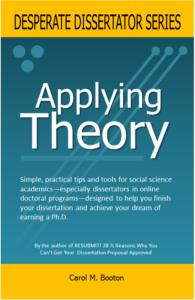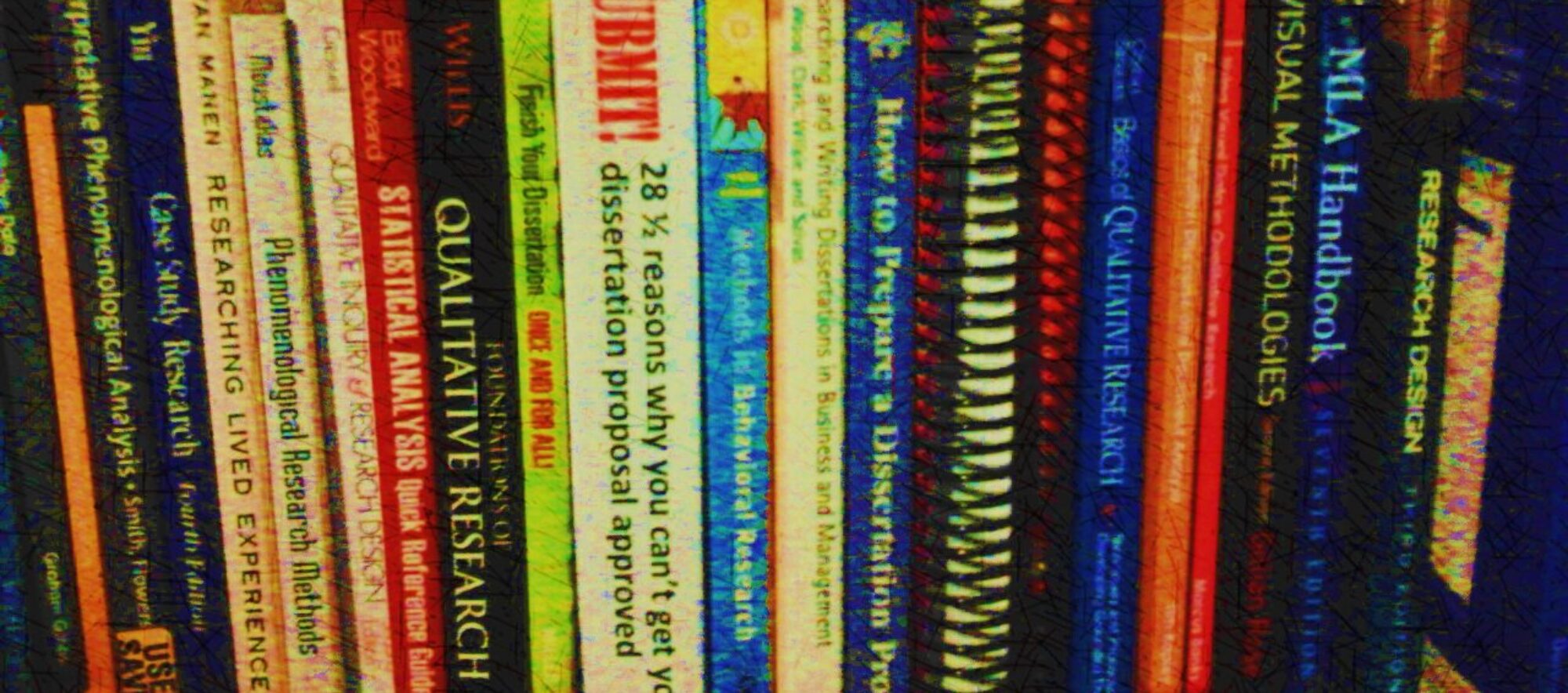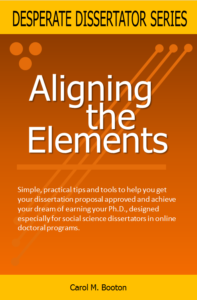Multiple times since the 1970s, legislators have tried to block the illegal and unethical behavior of some for-profit higher education institutions, especially those that provide vocational education. Each time, consumers get out the pitchforks, lawmakers pass laws, the culprits promise to shape up, and then people forget about it. However, loopholes and lax oversight seem to motivate owners of for-profit colleges to revert to their bad behavior. What is driving the machine that keeps burdening vocational students with loans half can’t repay? I think it is greed.
Feeling gaslighted by for-profit higher education
I come by my opinions of for-profit higher education honestly. I earned my doctorate at an online for-profit university, where I studied academic quality in vocational colleges for my dissertation topic. While I was working on my degree, I taught at a for-profit vocational college (hence, my inspiration for studying academic quality in vocational colleges—in other words, I had a bone to pick).
Before I started teaching at one, I didn’t know much about for-profit colleges—we used to call these technical colleges. I assumed technical colleges targeted students who wanted career advancement, new skills, maybe a certificate in phone system repair, automotive arts, or cosmetology. Technical college was a different type of education from the public universities I knew. Not bad, just different.
Then I was hired as an adjunct to teach marketing to four students in an associates of science (AAS) marketing program for a small private for-profit career college. The four students were the only students in the entire marketing program! A few terms later, the administrator needed me to teach MS Word. Next thing I know, I’m teaching marketing, management, communications, all the MS Office programs (even Access, which was completely foreign to me), keyboarding, 10-key math, and a bizarre medical software program I had never heard of, let alone used. I did my best to stay one chapter ahead of the class, trying to teach them what they were there to learn. It seems remarkable to me the gig lasted almost ten years, considering what I observed and did while I was employed there.
To add to my difficulties, classrooms at the career college were shabby and rundown. Materials, computers, and software programs were out-of-date and poorly maintained. Teachers were a dime a dozen, bodies to be plugged into class schedules with no regard for accreditation guidelines, let alone teacher expertise. Students were vulnerable marks to be enrolled and forgotten.
By the time the vocational school closed the campus and laid us all off in 2013, I was heartily sick of for-profit higher education. I quickly finished my dissertation and moved on . . . or so I thought.
They’re back
Like mice in the attic, the for-profit higher colleges are once again rustling around in the news. On Tuesday, Robert Shireman (2019) from the Century Foundation testified to a Congressional oversight committee about the ongoing dangers of for-profit higher education institutions that focus on profits at the expense of academic quality.
Why should we care? For-profits enroll mostly nontraditional students, and these student populations tend to be vulnerable. At the career college, most of our vocational students would not have succeeded at a public community college, let alone at a four-year university. Some had tried and failed. Some had learning disabilities. Some were former or current drug addicts. Most were low-income single mothers in their 30s and 40s who supported their kids on the student loan money left over after the college skimmed tuition off the top.
Students who enroll at for-profit institutions borrow a disproportionate amount of student loan money, compared to students who attend public and private nonprofit institutions. By law, up to 90% of a for-profit higher education institution’s revenue can come from student loans (The 90-10 rule, n.d.). For-profit borrowers default at twice the rate of public two-year borrowers. In fact, 52% of students who attend for-profit colleges default on their student loans after 12 years, compared to 26% of students who attend other types of institutions (Scott-Clayton, 2018). Why does that matter? Student loans are tax-payer funded. That means our taxes are helping line the pockets of for-profit college owners and shareholders.
The incentive to do the wrong thing
Lining owners’ pockets wouldn’t be so bad as long as they also gave students good academic quality that translated into careers, better jobs, promotions, higher paychecks, or preparation for higher education. We all want students to succeed, no matter what kind of school they attend. It’s good for society. But providing academic quality costs money—think up-to-date books and computer systems, think reasonable class schedules, think toilets that don’t overflow, AC that works, rugs that aren’t frayed, and teachers who are qualified to teach and allowed to teach their expertise.
For-profit colleges have enticed students into enrolling with fraudulent promises and deceptive advertising (US GAO, 2010). If students graduate, they often cannot be placed in the jobs the admissions reps promised them, and thus they cannot earn the healthy incomes they would need to pay back their student loans. Even if they don’t graduate, their student loans will likely follow them for at least twenty-five years—it is difficult to discharge student loans by declaring bankruptcy (US DOE Federal Student Aid, n.d.). Thus, victims of corporate greed and their own naiveté, students might be worse off than if they had never enrolled.
Some students can get relief in the form of loan forgiveness, depending on the type of loan and field of study, although if the Trump administration has its way, that program will be eliminated for 2020 (Friedman, 2019).
Even after my experiences teaching and learning in for-profit higher education, I have wanted to believe that for-profit colleges and universities can be good. For a while, I believed for-profit higher education was like fire—good or bad depending on how we use it: Fire can keep the house warm or burn it down. In the wrong hands, yes, some students can get hurt, but those are the exceptions, right?
Since 2016, one hundred for-profit colleges and universities have closed or merged with some other entity, compared to about twenty public institutions in the same period (Busta, 2019). That’s just since 2016! Two of the biggest closures—ITT Technical Institute and Corinthian Colleges—abandoned thousands of students who now seek redress from the Department of Education (NPR, 2018).
Converting to nonprofit status
These headlines aren’t new: Like the namesake in a game of Whack-a-Mole, the issue of for-profit higher education seems to reappear every few years. The corporate greed of for-profit colleges doesn’t seem to evaporate, even when consumers catch on to the scam. “The public has gotten smarter as a result of the big scandals at for-profit schools: enrollment at for-profits has dropped substantially from its peak in 2010” (Shireman, 2018).
Human greed is relentless. When lawmakers and the Obama administration put up roadblocks, the strategists at the for-profit colleges and universities addressed their for-profit status head on. Now many are apparently converting their institutions to nonprofit status.
“Unfortunately, the conversion to nonprofit status is susceptible to abuse by covert for-profits—schools that obtain the nonprofit label yet continue operating like for-profit institutions—leaving consumers and taxpayers more vulnerable than ever” (Shireman, 2018, for-profit colleges hiding in a regulatory blind spot).
I am not surprised. Apparently, it isn’t that easy for a for-profit institution to change its spots. Converting to a nonprofit requires owners to shift away from their single-minded quest for profits toward providing actual education, something they seem unable or unwilling to do.
Their strategy has nothing to do with delivering academic quality; they seem driven purely by greed. What other motive could compel them to undertake what must be a massive amount of paperwork to avoid laws that would limit their profitability?
Good people working in a bad system
Just because for-profit college owners might be corrupt doesn’t preclude students receiving quality education. I met a lot of teachers at the career college. With few exceptions, the teachers cared deeply about helping students succeed.
As vocational education instructors, we did the best we could with what we had. Whether we had one student in a class or thirty, whether we used textbooks ten years out of date, whether we still taught Office 2003 in an Office 2010 world, whether the AC was working, we showed up and did our best. We didn’t make more or less money according to enrollment; however, our jobs did depend on student evaluations and student enrollment. Receiving too many negative student comments could get us terminated. Unhappy students were vocal:
- “Her tests were impossible!” (I did comprehensive reviews before every test).
- “She gave us too much work” (The syllabus set the lessons; the school designed the syllabus).
- “She graded too hard” (I admit, I did, at first. Later, bludgeoned by student complaints, my standards declined to an embarrassing low).
I knew I wasn’t the only instructor dissatisfied with conditions at the career college. I chose to study academic quality as my dissertation topic. I asked ten faculty members to define academic quality as they understood it, based on their experiences teaching in for-profit on-ground vocational programs.
To my surprise, few of the faculty members had anything truly harsh to say about the owners or shareholders of the for-profit institutions for which they worked. Despite my reassurances that their responses would be kept completely anonymous and confidential, when they did mention profit as a potential issue, they were polite, circumspect, and even apologetic for bringing it up. Here are some excerpts, lightly edited for readability, of their opinions on problems with for-profit vocational education.
- “The customers in the profit world are definitely the students . . . another set of customers are the businesses. They are looking to hire from that student pool. Because again, we are delivering them a product. Students are a commodity that will hold up and stand the test of time.”
- “I feel like the mission of the owners, the shareholders, they’re more in line with profit, versus um, seeing students succeed to get jobs in their field.”
- “The for-profit schools were poised to capture huge market share when the economy failed but I’m not sure they did it right. Some schools were lying about what [students] could make . . . that really ended up getting media attention, so the good schools that were doing things on the up and up, it made them all look bad.”
- “For-profit schools should not cost twice what a public school does for the same education. And I will say, that is one place I struggled in teaching [here]. I knew those medical assisting students could have gone to [local public community college], but they didn’t have faith in themselves, that they could do community college. They felt they had to go vocational. They could have gotten the same education for half the price.”
- “A few years ago, [the owners] said they had to be making at least a 15% profit. Well, I understand business, and I understand profit. But if we focus on the wrong thing, we’re not focusing on our customers. If we have a great product [students/degrees], [profits will] happen. I’m not an administrator, but to me they look at it backwards.”
- “Well, in some respects, I guess we’ve set ourselves up, because in the past we have concentrated on getting the numbers in the door and not caring about anything else.”
- “I think one of the downfalls of being a for-profit is that we don’t always regulate the types of students we bring in. So we have students who want to go to school, but we . . . drive them into the wrong area. I teach criminal justice and a lot of times we get students with criminal records . . . we can’t place them. Period. Which affects our placement for the program, which impacts the teachers, because if we don’t place students, the teachers get let go and the program gets shut down.”
- “Owners are more concerned about, you know, the business of being [in business], especially in a for-profit. They have a lot of business things to consider, which I understand, because I was in business myself and I know that you have to run the business like a business. But on the other hand, what is their philosophy of education, I mean they have to have that deep down inside, that’s what they need to be, they have to realize why did they start this educational institution anyway?”
I am positive the owners at the college where I worked and at the university I attended did not start out intending to defraud students. I’m sure they launched with a desire to help people who sought career skills and advanced degrees. Success prompted them to add more courses, more branches, more teachers, more students, until enrolling students who qualified for Title IV student loan funds became the holy grail.
Removing the profit motive from higher education
The more I learn about for-profit education, from vocational to graduate school, the more I suspect the profit motive cannot coexist successfully with the education motive.
School leaders should focus on earning a profit or they should focus on providing quality education. I used to think schools could do both but now I don’t think so.
There’s nothing wrong with seeking to make profits; lots of great companies are profit-seeking entities. But education isn’t a product, and students aren’t customers—at least, not in the way GE makes and sells toasters.
For-profit higher education companies are in business to make money. They do that by providing education—education just happens to be their “product.” When all decisions are about the bottom line, selling more units is the path to higher revenue, and the incentive to cut costs is strong.
From a profit-making perspective, I understand the drive to enroll more students (sell more seats) even if the new students have no intention of learning anything, let alone graduating and finding jobs. Putting butts in seats uncorks a tidal wave of student loan money. The quality of butts is not a concern.
After WWII, some creative entrepreneurs recognized the sweet spot, the unmet demand for quick, flexible education options for nontraditional students who needed a shift, an upgrade, a new career, a new life. For-profit colleges’ best target audiences are military personnel, single moms, people of color, students with learning disabilities . . . anyone who for whatever reason could not or would not make it at a traditional public community college or state university. These vulnerable populations are easily swayed by promises of great jobs, great incomes, great lives—in short, the American dream.
Now that there are so many more options for working adults to earn reputable degrees from public and private nonprofit institutions, I’m guessing the trend of declining enrollments will continue at the for-profits. When their educational “product” costs twice as much as the public nonprofits offering, they won’t be able to compete.
Knowing what I know now
Greed is a sticky emotion that defies classification. Is greed good or is greed bad? Greed has probably motivated many of humanity’s great achievements, not to mention our survival instincts. However, I fear greed will be our downfall. I’d like to say it’s not for me to judge—I’d like to step away from the entire uncomfortable situation. But saying nothing doesn’t seem like an acceptable choice. Our common welfare has to come first. If we don’t protect each other and do our best for those who need help, then what are we doing?
Knowing what I know now, I would definitely not choose to attend a for-profit university. I cannot go back in time to take a different path, but I can suggest to you that if you are considering applying to a college or university, take time to learn about its history and business model. Then make your choice and do your best.
Sources
Busta, H. (2019, March 5). How many colleges and universities have closed since 2016? Retrieved from https://www.educationdive.com/news/how-many-colleges-and-universities-have-closed-since-2016/539379/
Cohen, P. (2017, February 20). For-profit schools, an Obama target, see new day under Trump. The New York Times. Retrieved from https://www.nytimes.com/2017/02/20/business/for-profit-education-trump-devos.html
Friedman, Z. (2019, March 12). Trump proposes to end student loan forgiveness program. Retrieved from https://www.forbes.com/sites/zackfriedman/2019/03/12/trump-proposes-to-end-student-loan-forgiveness-program/#23d6688e415e
Harris, A. (2018, August 29). The lifelong cost of getting a for-profit education. Retrieved from https://www.theatlantic.com/education/archive/2018/08/for-profit-college-students-are-saddled-with-debt-they-cant-pay-back/568834/
NPR. (2018, December 14). Defeated in court, Education Dept. to cancel $150 million of student loan debt. Retrieved from https://www.npr.org/2018/12/14/676755770/the-education-department-is-canceling-150-million-of-student-loan-debt
Scott-Clayton, J. (2018, January 11). The looming student loan default crisis is worse than we thought. Retrieved from https://www.brookings.edu/research/the-looming-student-loan-default-crisis-is-worse-than-we-thought/
Shireman, R. (2018, August 23). The covert for-profit: How college owners escape oversight through a regulatory blind spot. Available from https://tcf.org/content/report/covert-for-profit/
Shireman, R. (2019,
March 12). Restoring Congressional
oversight of for-profit colleges (Testimony to the Committee on
Appropriations Subcommittee on Labor, Health and Human Services, Education, and
Related Agencies at the U.S. House of Representatives). Available from https://tcf.org/content
/commentary/restoring-congressional-oversight-profit-colleges/
The 90-10 rule (n.d.). Wikipedia. Available from https://en.wikipedia.org/wiki/90-10_rule
US GAO. (United States Government Accountability Office). (2010, August 3). For-profit colleges: Undercover testing finds colleges encouraged fraud and engaged in deceptive and questionable marketing practices [Testimony of GAO before the U.S. Senate Committee on Health, Education, Labor, and Pensions]. Retrieved from http://www.gao.gov/htext/d10948t.html
US DOE Federal Student Aid. (Department of Education, Federal Student Aid). (n.d.). In some cases, you can have your federal student loan discharged after declaring bankruptcy. Retrieved from https://studentaid.ed.gov/sa/repay-loans/forgiveness-cancellation/bankruptcy
=====================================
Books and resources
Applying Theory

Dissertators often struggle to choose and apply a theoretical framework to their research projects. In this helpful guide, I offer suggestions from my own experience. In addition, I reveal how other dissertators have applied theory successfully and earned their doctorates. Written in a friendly, nonscholarly manner, I demystify the challenges of applying academic theory to a research project. You will learn that theory is nothing to fear—in fact, we all use theory all the time! With the help of this powerful little book, you will learn to master theory and achieve your dream of earning your Ph.D.
Print version $15.99
Kindle version $7.99
Coming in 2019
Aligning the Elements
In the second book of the Desperate Dissertator Series, I dig into a common problem dissertators face when preparing their proposals: aligning the elements of the dissertation. The elements of the dissertation usually include the problem statement, the purpose statement, the research questions, the theoretical framework, and the methodology and methods. Aligning these elements means ensuring they logically flow from one to the next. Lack of alignment is possibly the main reason proposals are not approved. In this book, I offer some tips to help you align the elements and show what other dissertators have done to succeed (it could be easier than you think).
Resubmit! 28 ½ Reasons Why You Can’t Get Your Dissertation Proposal Approved

This comprehensive book is the missing link for dissertators who have struggled to get their proposals approved. This indispensable book bulges with insights, suggestions, examples, diagrams, and practical tips, written especially for the online dissertator who may receive little support during the proposal process. I present solutions to address twenty-eight potential reasons why you might be struggling to get your proposal approved. For example, you will learn how to write a clear problem statement, devise research questions and hypotheses, and align the elements of the proposal to facilitate speedy approval. I unlock the mysteries of Word and Excel to show you specifically how to use these tools for your proposals. Over 200 tables and figures show you exactly what to do. As a bonus, you will learn how to design a web-based survey and make a plan for fielding and analyzing the data. In this book, I cover it all to help you overcome obstacles and finish your dissertation.
Free templates and worksheets are available here.
Print version $29.99
Kindle version $9.99







